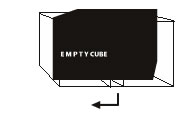PEDRO GADANHO
NOVEMBER, 16, 2010

CONTACTS
shrapnelcontemporary.wordpress.com
EXHIBITION INFORMATION
TEMPLO DOURADO
(Portugal dos Pequenitos, update #01)
Instalation
Associated projects of the Lisbon Architecture Triennale | With: A ESTANTE, Itinerant bookshop
A gift proposal and a house model.
"A imagenzinha perfeita do Templo Dourado dentro do próprio templo fazia-me lembrar a série infindável de correspondências que surgem quando um pequeno universo está situado dentro de um grande universo e um mais pequeno, por sua vez, dentro do primeiro."
[“The tiny, perfect image of the Golden Temple within the temple itself reminded me of the endless series of correspondences that emerge when a small universe is located within a large universe and a smaller one, in turn, within the first.”]
1. The above words , taken from O Templo Dourado, the Portuguese translation of Yukio Mishima’s 金閣寺 (known in English as The Temple of the Golden Pavilion), place us at the epicentre of the project Pedro Gadanho has conceived for EMPTY CUBE, entitled O Templo Dourado (Portugal dos Pequenitos, update #01).
Describing what is visible in the chosen materials and in their symbolical (quite political?) resonance is almost unavoidable. However, it is impossible to avoid wandering around the set-up of the tiny exhibition space, which finds itself re-written quite beyond its physical limits by the artist’s installation, extending itself outwards of its inner stratification.
2. Pedro Gadanho is an architect who explores architecture as a form of changing the way we think about relationships in the inhabited space, their caducity and consequent transitoriness. It is in this sense that this reproduction and updating of a model finds, in the metaphor of the Golden Temple, a connection with a future intervention in Portugal dos Pequenitos (also the subtitle of the present exhibition). In a letter sent by e-mail to the Bissaya Barreto Foundation, which is included in the displayed pieces, the architect proposes to make a gift of this ephemeral project, within the scope of another, more ambitious, project, concerning the future expansion of that “theme park”. “Portugal dos Pequenitos” [Portugal of the Little Ones] is an imago mundi located in Coimbra, conceived by architect Cassiano Branco as an illustration of a universal system that is imprisoned, or perhaps embedded, in the Portuguese mind, held hostage by a notion that is demonstrative of the breadth and representation of a universe that was conquered and reorganised in order to become a model.
3. A second reading of the display draws our gaze towards the interior of the golden construction – made from structures meant to hold up plaster card walls – where we recognise a Monopoly board. Having arrived here, we should go back and consider the scale of the small red house that acts as a marker for a player, and thus a proprietor. This little red house is the model that corresponds to the enlarged (and golden) construction found inside the cube. In turn the cube, as an exhibition space, entertains a proportional rapport with the gallery that hosts the EMPTY CUBE event. In this network of successive correspondences a critical intervention on economic and political models, as represented in the basic geometry of the Monopoly game’s colourful board, takes place. However, over the board rises the golden structure, as a symbolic representation of the catharsis the aesthetic sphere makes manifest on the real immutability of materialism.
4. "Talvez o Templo Dourado tivesse adoptado algum disfarce para esconder a sua verdadeira beleza."
[“Perhaps the Golden Temple had adopted some kind of disguise to conceal its true beauty.”]
The installation Pedro Gadanho has built as an ephemeral event proposes to us a meeting between two utopian visions of resistance and change. On the one hand, the supreme beauty that suffuses the temple’s idealised construction and its tragic impossibility. On the other, the dissolution of a universalist vision, reduced to a toy model, enlarged and updated as part of a theme park. In the two instances presented here, architecture as both representation and field of possibilities, puts us in mind of the scale of the models exhibited here, which, though close in size to didactic implements and toys, nonetheless embody in this interstitial relationship of universes contained within each other a subversion of their symbolic and political value, making us wonder whether the aesthetic sphere still holds some weight and value in our rapport with the world.
João Silvério
November 2010
--------------------------
1 This is one of eight quotations selected by the artist, which acted as a basis for the conception of this ephemeral project.





